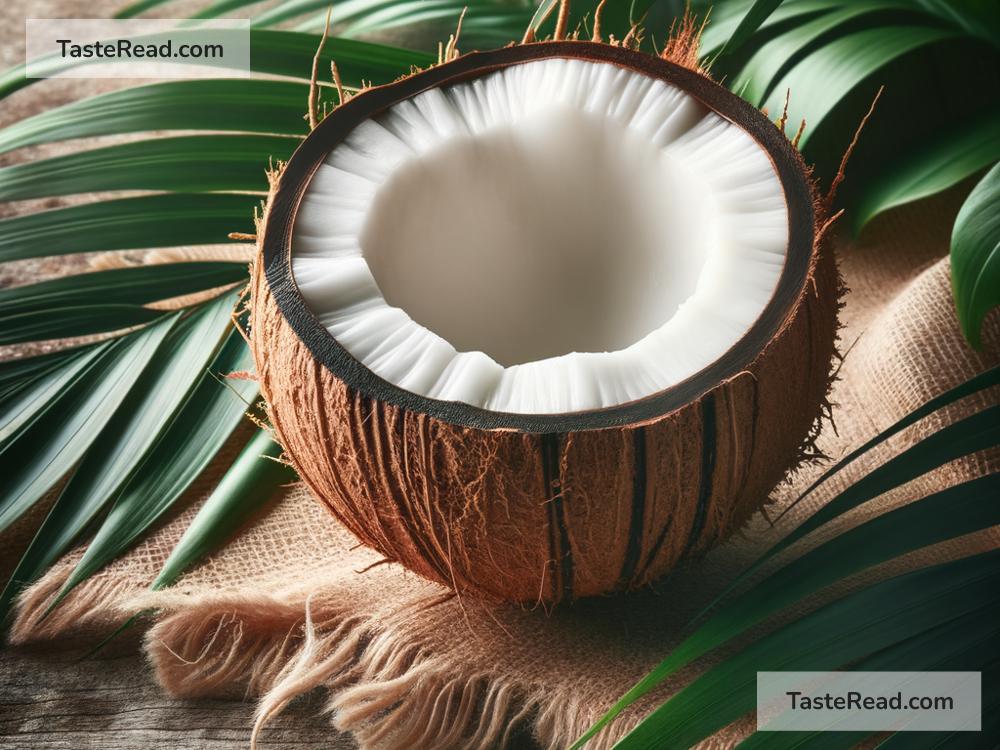Why Coconuts Have Hard Shells: A Nature’s Defense Mechanism
Coconuts are one of the most fascinating fruits in the world. Found mostly in tropical regions, they are famous for their delicious water and creamy white flesh. But if you’ve ever tried cracking a coconut, you know it’s no easy task! The hard shell outside can feel almost indestructible. So, you may wonder, why do coconuts have such tough shells? Let’s dive into the world of coconuts to understand why nature gave them such sturdy armor.
Survival in Tough Environments
Coconut palms grow in tropical areas, often near beaches and oceans. While these places seem beautiful, they can be harsh environments for plants. Between strong winds, heavy rain, and the salty sea air, coconut trees need to adapt to survive. The hard shell of the coconut is one of their ways of tackling these challenges.
The shell protects the tender inside — called the “endosperm” — which contains the coconut water and flesh. The soft inner part is full of nutrients and water, essential for the coconut to grow into a new tree. If the coconut were easily damaged, it wouldn’t be able to survive its journey to find fertile ground. The shell works like armor, keeping the important parts of the coconut safe.
Protection From Predators
Animals and humans love coconuts because they are nutritious, tasty, and hydrating. However, coconuts need to keep their insides secure until the right time for growth. The hard shell acts like a locked safe. Most animals can’t get to the coconut flesh or water inside, no matter how hungry they are. This ensures the coconut stays intact until it can grow into a new tree.
Some animals, like monkeys or crabs, have figured out how to open coconuts. But it’s still not an easy task, even for them! By having such a tough shell, coconuts have fewer predators to worry about and better chances of surviving long enough to sprout and grow.
Traveling Far and Wide
One of the coolest things about coconuts is that they can float on water and travel long distances. You may have heard of coconuts washing up on beaches miles and miles away from where they grew. This is because of their hard shells.
The shell is waterproof and protects the coconut from seawater. When a coconut falls into the ocean, it doesn’t get spoiled or sink. Instead, it floats to new locations, carried by the waves. Once it washes up on land, it can start growing into a new coconut tree. Without the hard shell, seawater would ruin the coconut before it could reach a different place.
This ability to travel has made coconuts popular worldwide. Even places far from tropical beaches now grow coconut trees because of this natural travel system!
A Shell Designed by Nature
If you look closely at the design of a coconut, you’ll see it has more than just one layer of protection. A coconut has three important parts outside of the edible center:
-
Outer Husk: This is the fibrous coating that surrounds the coconut shell. It’s called “coir,” and it helps the coconut float on water. Coconut coir is also used by humans to make ropes, mats, and even brushes.
-
Hard Shell: Beneath the husk lies the tough brown shell. This is the hardest part of the coconut and works like armor to protect the softer layers inside.
-
Inner Membrane: Inside the hard shell, there’s a thin membrane that wraps around the edible part of the coconut. This layer provides extra protection against bacteria or damage.
These layers work together to make the coconut one of the toughest fruits in the world.
Lessons From Coconuts
The hard shell of a coconut is more than just a physical feature — it’s a lesson in survival. Nature designed coconuts to face the challenges of their environment: salty water, strong winds, animals, and long-distance travel. Without their hard shells, coconuts wouldn’t be able to thrive or spread far and wide.
For humans, coconuts also remind us about resilience. Just like coconuts, we sometimes need tough “shells” in life to protect us from challenges. At the same time, inside every coconut is something soft, sweet, and nourishing. It’s a good reminder that strength and softness can coexist.
Fun Facts About Coconut Shells
Before we finish, here are some fun facts about coconut shells:
- Coconut shells are so durable that people use them to make bowls, cups, and handicrafts. They’re even used in some eco-friendly construction materials.
- In some cultures, coconut shells are burned to create charcoal, which is used for cooking or purifying air and water.
- Coconut shells are biodegradable, meaning they naturally break down over time and don’t harm the environment.
Final Thoughts
So, the next time you struggle to crack open a coconut, remember why its shell is so tough. It’s nature’s way of helping this incredible fruit survive, grow, and travel around the world. The coconut’s hard shell is proof of how amazing and clever nature can be!
Coconuts may be hard on the outside, but they’re worth the effort. Inside, they offer delicious flavors, hydration, and nourishment. Maybe we can learn from coconuts — to stay strong during tough times and remember there’s sweetness waiting within!


